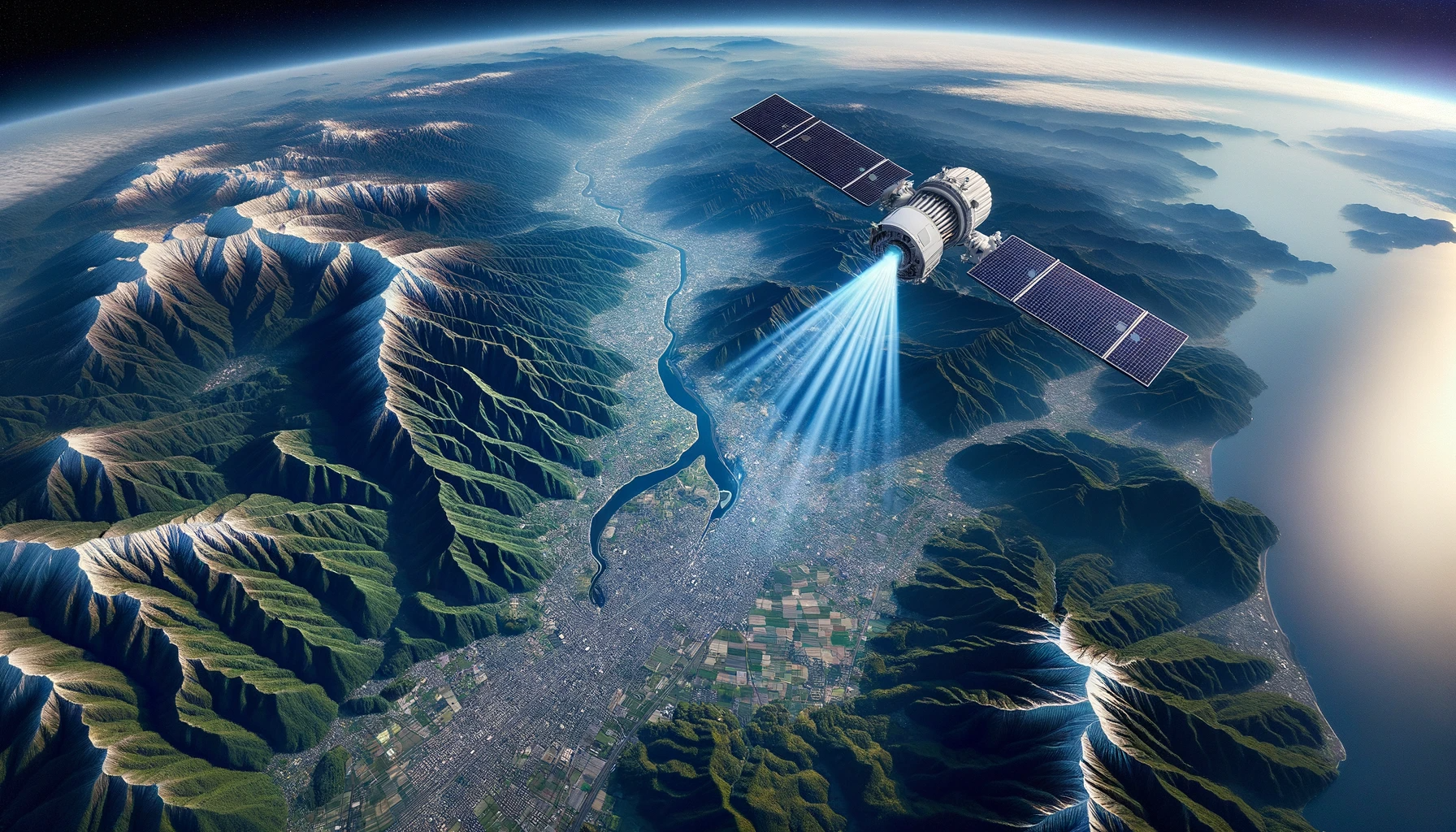In a recent publication in the journal Nature Portfolio, researchers explored artificial intelligence (AI)-based interferometric synthetic aperture radar (InSAR) technology in landslide monitoring in Japan.
 Study: Revolutionizing Landslide Monitoring in Japan with AI-Enhanced InSAR Technology. Image credit: Generated using DALL.E.3
Study: Revolutionizing Landslide Monitoring in Japan with AI-Enhanced InSAR Technology. Image credit: Generated using DALL.E.3
Background
A catastrophic landslide that occurred in July 2021 in Atami City, Shizuoka prefecture, claimed the lives of 27 people. Japan consistently faces the looming threat of landslides due to its susceptibility to substantial annual rainfall, and approximately 75 percent of its terrain comprises mountainous regions. This risk is poised to escalate further in the context of climate change, characterized by more frequent and intensified rainfall events.
While monitoring ground movements can be pivotal in issuing timely warnings about potential landslides, ground-based or aerial observations have constraints. Satellite-based monitoring presents a promising avenue for achieving comprehensive, rapid, and extensive coverage, but the data it generates necessitates extensive processing.
Presently, through the utilization of AI for the analysis of data collected by various Earth satellites at low orbit, SKY Perfect JSAT, a Japanese satellite communications company headquartered in Tokyo, has gained the capability to surveil ground deformations throughout the entire nation, encompassing urban areas and rural regions alike. Accessible through an interactive web portal, this service empowers users, including civil engineering firms and municipal governments, to vigilantly track both sudden and gradual ground movements.
Enhancing space-based imaging with AI
The microwave-based system described in this study relies on synthetic aperture radar (SAR), a technique utilizing reflected microwaves to monitor ground points. This technology offers a high level of detail in imaging and is impervious to weather conditions or daylight limitations. SKY Perfect JSAT employs a constellation of SAR-enabled satellites to provide daily imagery of diverse regions in Japan. To detect ground movements, the method involves the comparative analysis of images captured at different time intervals.
Nonetheless, InSAR analysis demands significant data processing to eliminate noise and rectify errors. SAR exhibits immense potential for ground observation but is hampered by various limitations, rendering it challenging to access and utilize. Further, raw InSAR data contains observation errors, topographic location inaccuracies, atmospheric delays, and other components that necessitate a multi-step correction process. This typically mandates expert analysis and extensive computation, restricting its application to urban areas, which are more amenable to processing.
To surmount these challenges, an AI-driven statistical analysis and a low-computation algorithm have been developed to expedite the correction process and validate outputs with precision, requiring minimal expert intervention. This innovative approach allows researchers to extend this capability at a significantly reduced cost to all regions of Japan, transcending urban areas.
Advancements in InSAR technology for safer landscapes
SKY Perfect JSAT's InSAR service has been finely tuned to cater to urban, rural, and wilderness settings, enabling its application in remote landslide monitoring and early warnings. Municipal governments, construction firms, airports, and various other entities are already utilizing this system. Presently, the team is in the process of enhancing its capabilities to facilitate precise infrastructure monitoring, focusing on structures like bridges and towers where the detection of differential vertical movement holds utmost importance.
Researchers express that the InSAR service represents a distinctive and potent capability capable of replacing labor-intensive ground-based surveys and expanding monitoring to regions that were previously inaccessible, such as the mountainous terrains of Japan. The current accuracy in measuring changes is under 10 mm, and continuous enhancements in statistical processing are underway to enhance resolution across diverse environments. They further emphasize that this service underscores the immense potential of space-based observations and will contribute to reducing uncertainties and enhancing safety regarding landslides and subsidence issues in Japan.
Conclusion
In summary, researchers explored SKY Perfect JSAT's AI-driven InSAR technology, revolutionizing landslide monitoring in Japan. They concluded that this technology offers precise, cost-effective, and expansive coverage, enhancing safety across diverse terrains.